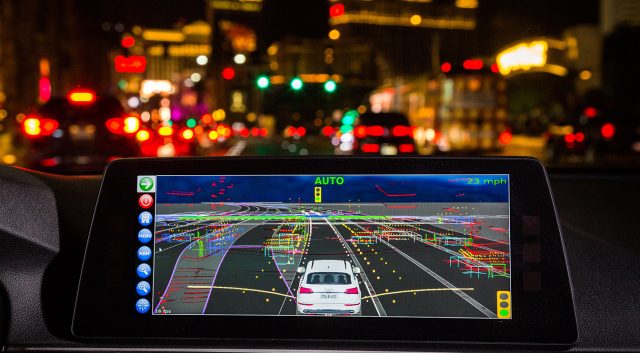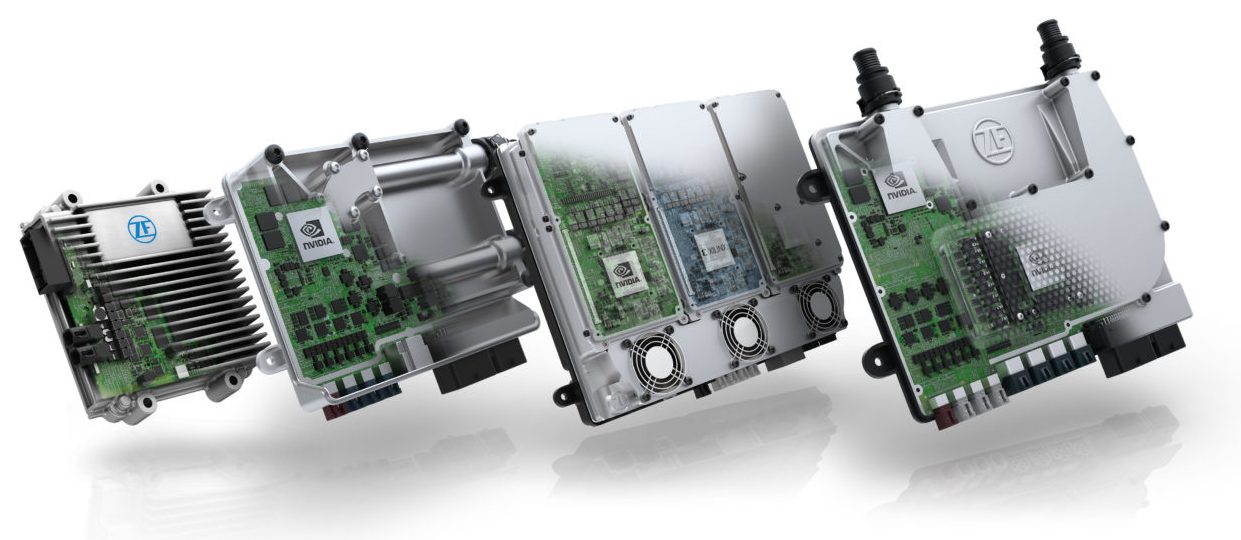Robotic industry is finally becoming more realistic.
- Transfer

Over the past decade, most of the hype around robo-mobiles has focused on the idea that Google first launched (now Waymo), and then picked up Tesla and others. This is the idea of a level five robotic(completely, in fact, truly autonomous driving no matter what the circumstances), which you can buy to relax forever in the backseat. It can be sent for children to school, or ordered to ride in circles in anticipation of you, or even send to find yourself a parking space. A little later, it became clear that personal cars of the 5th level would have to wait much longer, and it would be much harder to create them than it seemed earlier in pink dreams. At CES 2019, held in the first half of January, this view was reinforced by how manufacturers moved from the unrealistic promises that were heard at previous CES, to a much more practical approach, and the gradual implementation of plans.
Level 5 is getting further, not closer
Last year was full of warning signs and obstacles for the development of robots. The most famous fact is that the accidents involving the machines from Uber and Tesla raised the question of whether these companies understand what they are doing. In addition, Waymo, the undisputed leader in advancing to level 5, completed its own deadline for the release of robotic taxis at the end of 2018 in the mildest possible ways by running a small number of test samples in limited conditions on some routes. Tesla removed from the order page the option “fully autonomous driving” in order “not to confuse people” (apparently, this implies the fact that the option that a person ordered several years ago will not appear in his car).
If we talk about the pros, there were also positive developments in the field of robots, indicating the emergence in the near future of examples of their actual use and the winning companies. And three such cases seemed to me the most interesting.
Aptiv: at levels 2, 3 and 4 you can earn a lot of money
One of the problems for almost all companies trying to issue a level 5 car is that it’s a money hole. If you don’t look like Google, which actually prints a profit, or Tesla and Uber, who have so far managed to get the funding they need, then this is a very expensive job without visible exhaust in the near future. But for the leading supplier of auto parts Aptiv (formerly Delphi), the transition from 2nd to 5th level seems just natural development of its automotive electronics business. They have developed an advanced architecture that, in their opinion, will help automakers begin to integrate various driving aids systems, and gradually improve them over time.

I made a test drive in one of the cars that Aptiv provided Lyft in Las Vegas, and it was an interesting demonstration of its capabilities. The car was similar to the one that was used last year, but its systems were updated, increasing functionality. For example, there appeared RTK (kinematic addition of GPS in real time), which allowed the car to determine its location with an accuracy of 2.5 cm (instead of the previous 10 cm). This accuracy makes it possible to discern whether a pedestrian is worth on the edge of a sidewalk or at a pedestrian crossing. Impressively, and not surprisingly, the fact that over the few kilometers that I drove in the car, operator intervention was not required. We drove around buses, pedestrians, made 180-degree turns on busy six-lane streets.
Nvidia also took a big step in that direction. Prior to that, she basically advertised how her high-end Pegasus computer is perfect for level 5 projects. Probably, realizing that no serious sales volumes in the segments of the 5th and even 4th levels can be expected in the near future, Nvidia launched a solution for level 2+ - DRIVE autopilot based on the less expensive Xavier SoC system to large and constantly growing sales of cars with driver assistance systems and automatic security.
Deere: “And we actually offered automatic driving even before people knew about it”

John Deere has been building autonomous driving technology into his tractor for about 15 years. We managed to ride in the current version, and it was not only impressive in terms of technology, but also convincingly useful. Many farmers drive these tractors for 12-15 hours a day to and fro through the fields. Any mistake is worth crushed plants. Our driver indicated that it was just the same as if you had to drive your car according to white markings on the edge of the road all day, and each time you turned away you would have lost $ 3. JD top tractors have RTK systems and surveillance cameras, and are capable of driving with an accuracy of 2.5 cm.
JD also offers an ingenious path memorization system. Not all fields are perfectly even, not all crops grow in straight lines. The tractor driver can drive through his field once, and then the tractor will repeat this path itself if necessary. This allows the farmer to perform other important tasks - for example, controlling the device that clings to the tractor. If, for example, you need to go a little to the right or to the left in order not to run into planted plants, then the learned path can be shifted to one side or the other. We ourselves observed how the massive tractor was perfectly following in our footsteps, going in a wave-like way.
There are many similar uses for this technology, for example, large factories or mines. The technology gives an instant advantage and is today quite realistic. Simply, it does not attract public attention as robomobils.
Robotics will be - just not like we thought.

Nvidia DRIVE AGX Xavier
Many companies have divided the task of reaching level 5 into stages in order to make it easier to work with. Some have limited robo-jobs in areas that are easier to navigate - like Voyage and his work in areas where older people live. Others lean towards applications that do not include moving people, for example, a delivery robot from Nuro, which teamed up with Kroger to develop an autonomous delivery. Others, such as Aptiv (with Lyft) and Cruise (part of GM) work with advanced use of level 4, with some limitations. They have limited the areas of travel cars areas that are carefully marked and closely monitored, and where you can carry out the necessary infrastructure updates. They also have no price restrictions, Since commercial leasing machines have a high utilization rate, they can be significantly more expensive than personal ones. They can track cars from the operations center and intervene as necessary - this option is not available to the average user who sent his car to carry out some kind of order.
Robotics also open a curtain on possible future shipments. Most industry experts say that when we get closer to level 5, most people will not have personal cars, they will simply sign up for “travel services”. Obviously, the exception will be lovers of sitting behind the wheel of a car, living in rural areas, but anyone living in an area with sufficiently dense buildings and not receiving particular pleasure from driving independently, or not wanting to have his own car, can simply completely abandon owning as such.
Not everyone agrees with such assumptions. For example, Zoox believes that it will be able to independently develop, create, and sell a level 5 robotic mobile in less time than others consider possible. Soon we will find out if this is so.
